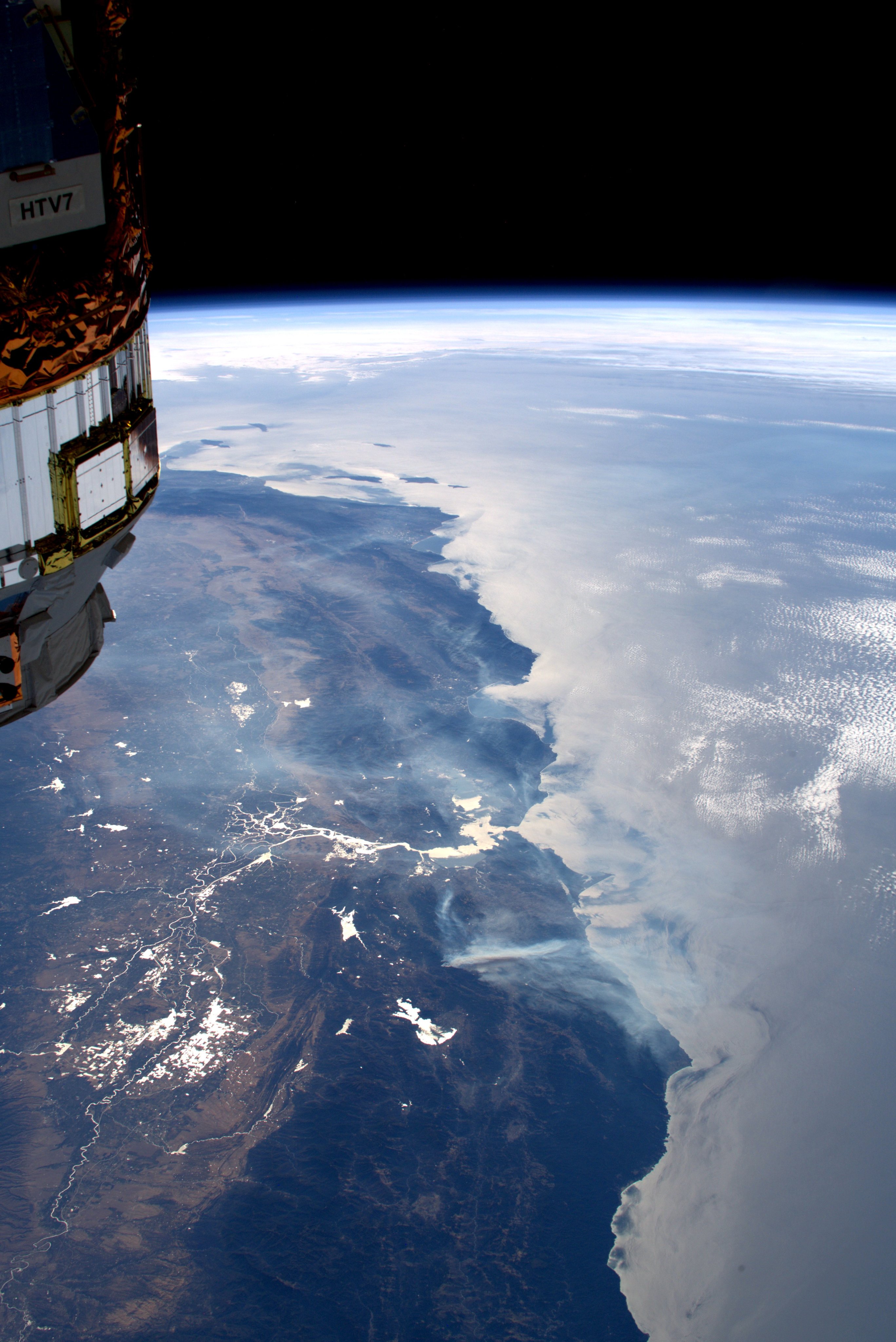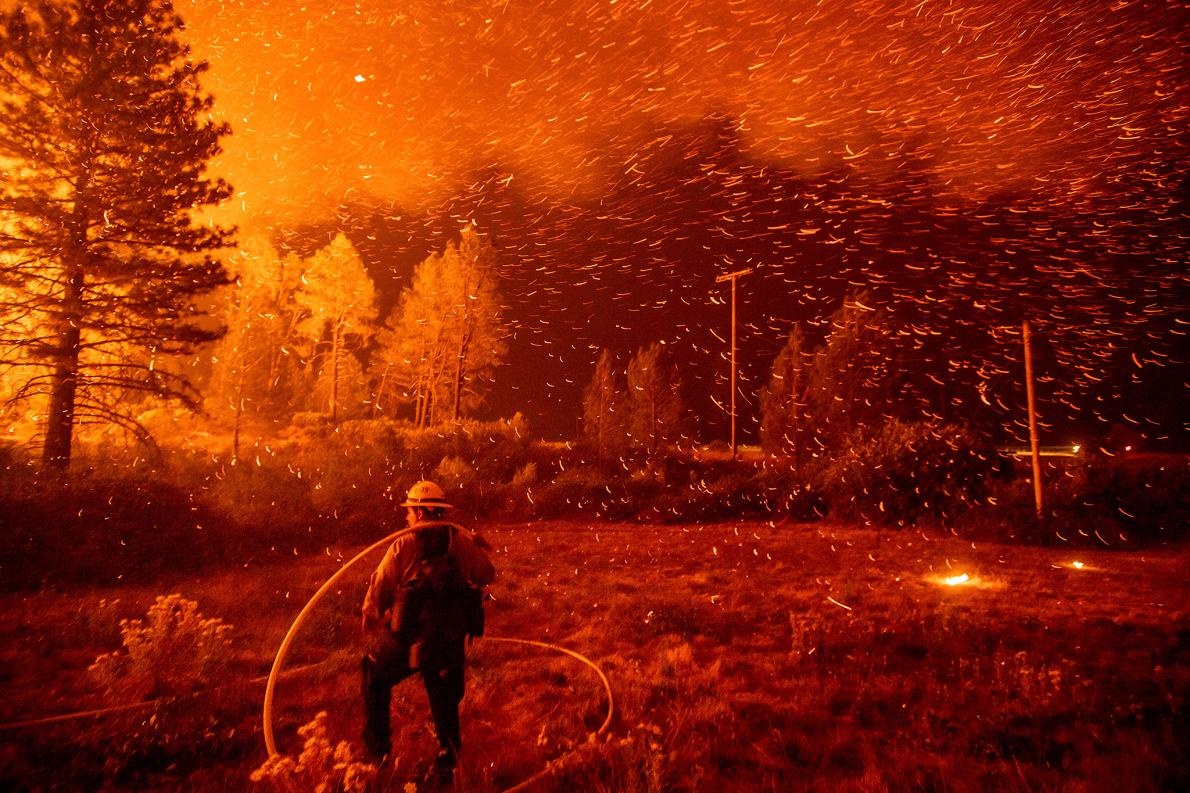[:ja]アンドルー・モルガン宇宙飛行士がISSから撮影した米カリフォルニア州の山火事です。

北カリフォルニアのワインの産地として有名なソノマ地区では300km2以上が焼失し、約18万5千人に避難命令が出ています。ナショナルジオグラフィック誌によると、気候変動による気温上昇が木々や草原を燃えやすくしているとされています。過去100年の間に、カリフォルニア州の夏の気温は1.4℃上昇したとされ、気温が上がると、燃えやすさは急激に高まるといいます。最近の研究によれば、1970年代と比べ、カリフォルニア州で夏に火災が起きた土地の面積は8倍にもなり、年間の焼失面積は5倍に増えています。
地上の様子はこちらです。

参考文献: Andrew Morgan’s Tweet
地球俯瞰画像を見る: LiVEARTH
[Earthview Wonders] No.888: California Wildfires🇺🇸
Astronaut Andrew Morgan captured from ISS the wildfire of Sonoma, California, U.S..

Thousands of firefighters in northern California battled to control wildfires fueled by howling el diablo winds, the largest of which forced at least 185,000 people to evacuate their homes. According to the article of National Geographic, “climate change’s stamp is evident in many of the fires, primarily because hotter air means drier plants, which burn more readily”. Over the past century, California has warmed by about 1.4C. Hotter air draws water out of plants and soils more efficiently than cool, leaving the trees, shrubs, and rolling grasslands of the state dry and primed to burn. Crucially, that effect increases exponentially with every degree of warming, explains Daniel Swain, a climate scientist at the UCLA.
The local scenery on the ground is as follows.

Reference: Andrew Morgan’s Tweet
See earthview photo gallery: LiVEARTH[:en][Earthview Wonders] No.888: California Wildfires🇺🇸
Astronaut Andrew Morgan captured from ISS the wildfire of Sonoma, California, U.S..

Thousands of firefighters in northern California battled to control wildfires fueled by howling el diablo winds, the largest of which forced at least 185,000 people to evacuate their homes. According to the article of National Geographic, “climate change’s stamp is evident in many of the fires, primarily because hotter air means drier plants, which burn more readily”. Over the past century, California has warmed by about 1.4C. Hotter air draws water out of plants and soils more efficiently than cool, leaving the trees, shrubs, and rolling grasslands of the state dry and primed to burn. Crucially, that effect increases exponentially with every degree of warming, explains Daniel Swain, a climate scientist at the UCLA.
The local scenery on the ground is as follows.

Reference: Andrew Morgan’s Tweet
See earthview photo gallery: LiVEARTH[:]